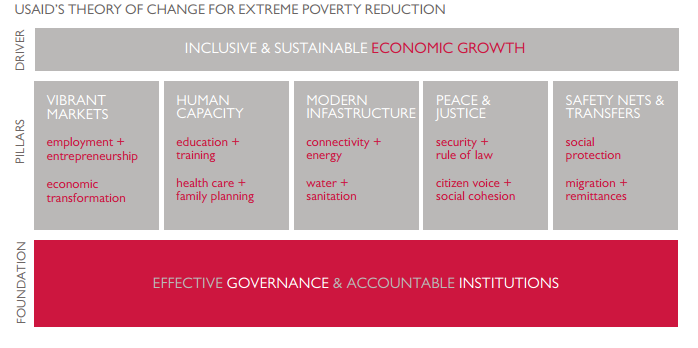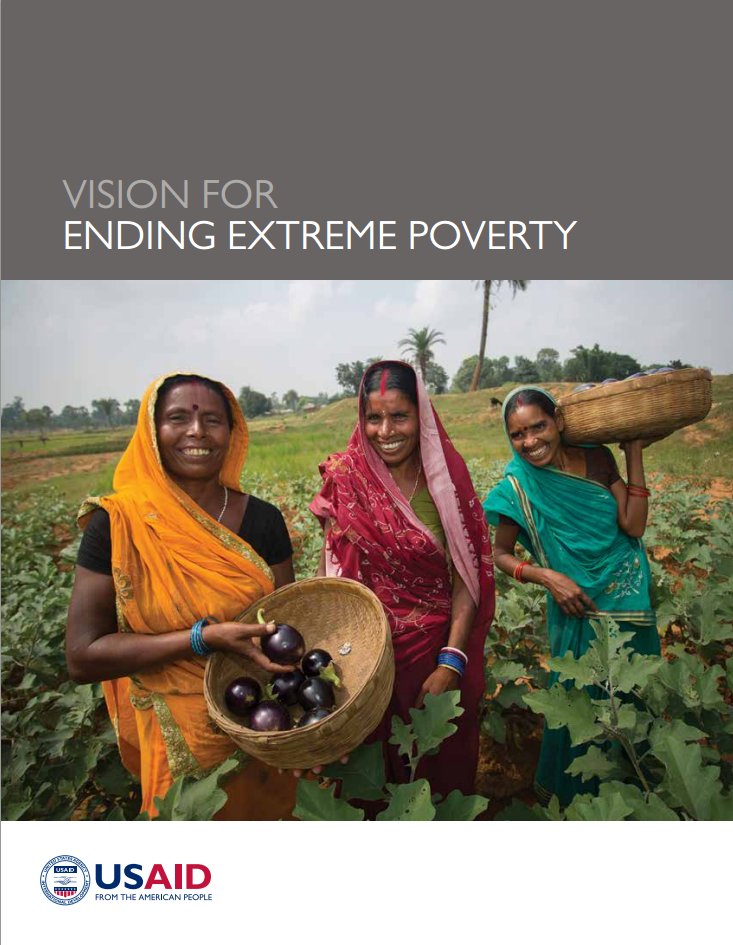Speeches Shim
In September 2015, as the Millennium Development Goals expired and the 2030 Agenda for Sustainable Development was being adopted, USAID put forward an ambitious Vision for Ending Extreme Poverty.
Vision for Ending Extreme Poverty ![]() (pdf - 11 MB)
(pdf - 11 MB)
Extreme poverty often refers to living on less than $1.90 per day. But extreme poverty is more than just a number. It is also more than a simple measurement of income and consumption. USAID defines extreme poverty as "the inability to meet basic consumption needs on a sustainable basis. People who live in extreme poverty lack both income and assets and typically suffer from interrelated, chronic deprivations, including hunger and malnutrition, poor health, limited education, and marginalization or exclusion.
The Vision articulates what is needed to achieve the goal of ending extreme poverty by presenting a theory of change summarizing the evidence on common elements across countries that have achieved significant reductions in extreme poverty. The Vision acknowledges:
- Rapid and sustained inclusive economic growth is a significant driver of poverty reduction.
- Sustained inclusive growth, in turn, is supported by progress along several "pillars": vibrate markets, human capital, modern infrastructure, peace and justice, and safety nets and transfers.
- At the base, foundational for inclusive economic growth, are effective governance and accountable institutions. This is about country governments securing the safety of their citizens, investing in basic social services, implementing well-grounded fiscal and regulatory policies, and respecting political space for their citizens. (For more information about USAID's theory of change, please click here.)

Operationally, the Vision means that USAID should continue working with the global community to:
- Leverage existing development capacities and priorities towards ending extreme poverty - such as increasing food security, promoting child survival, adapting to climate change through climate resilient growth, strengthening health systems, expanding access to renewable energy, and improving education.
- Invite new ideas and fresh perspectives to development efforts, to find innovative solutions to longstanding and seemingly intractable development challenges.
- Bolster economic growth and connect people to the global economy and more effectively engage in fragile contexts, where we project extreme poverty will become increasingly concentrated in the coming decades.
- Strengthen the underlying mechanisms of voice and accountability through the promotion of democracy, human rights and governance.
- Priorities the intersection between extreme poverty and fragility - and, in particular, building on our leadership on the New Deal for Engagement in Fragile States and on resilience to recurrent crises.
Looking ahead, USAID will continue to partner with governments, civil society, businesses, and other stakeholders, to drive progress on achieving the goal of ending extreme poverty by 2030.
Read USAID's Vision for Ending Extreme Poverty and related discussion papers:


Comment
Make a general inquiry or suggest an improvement.